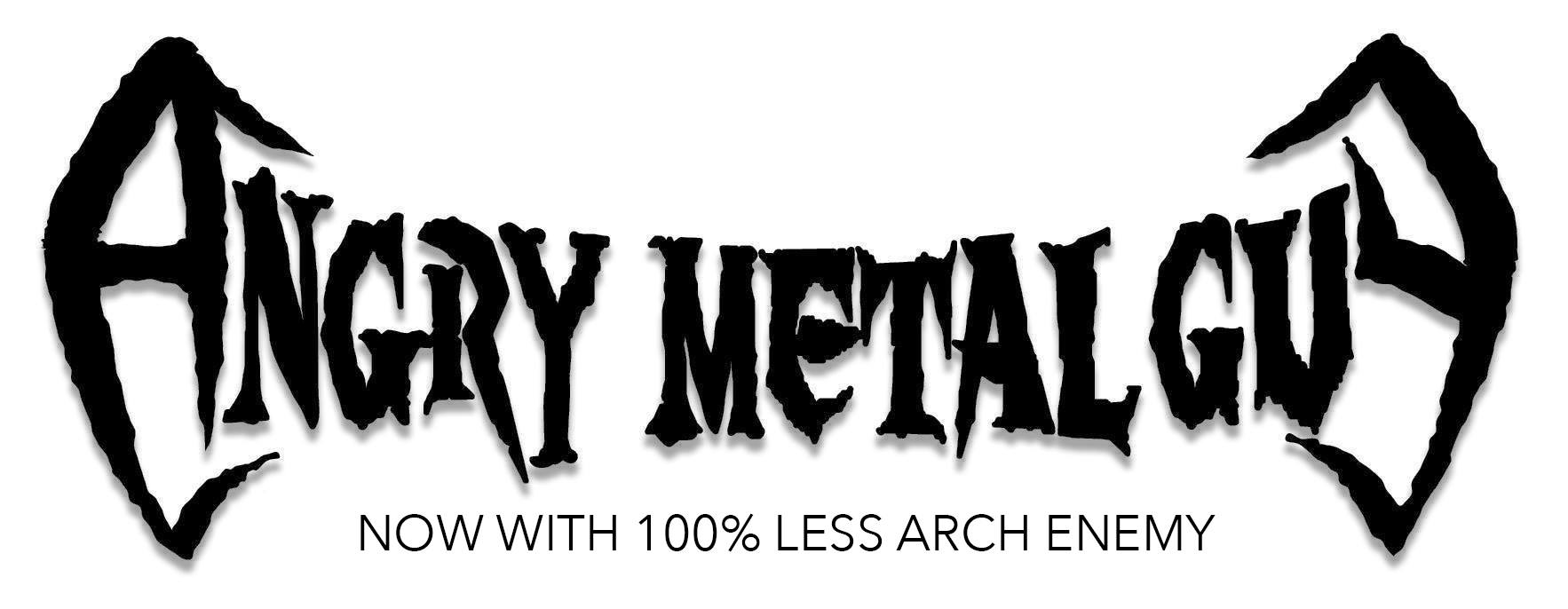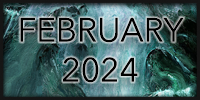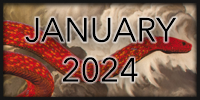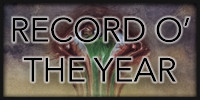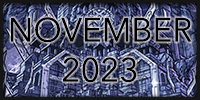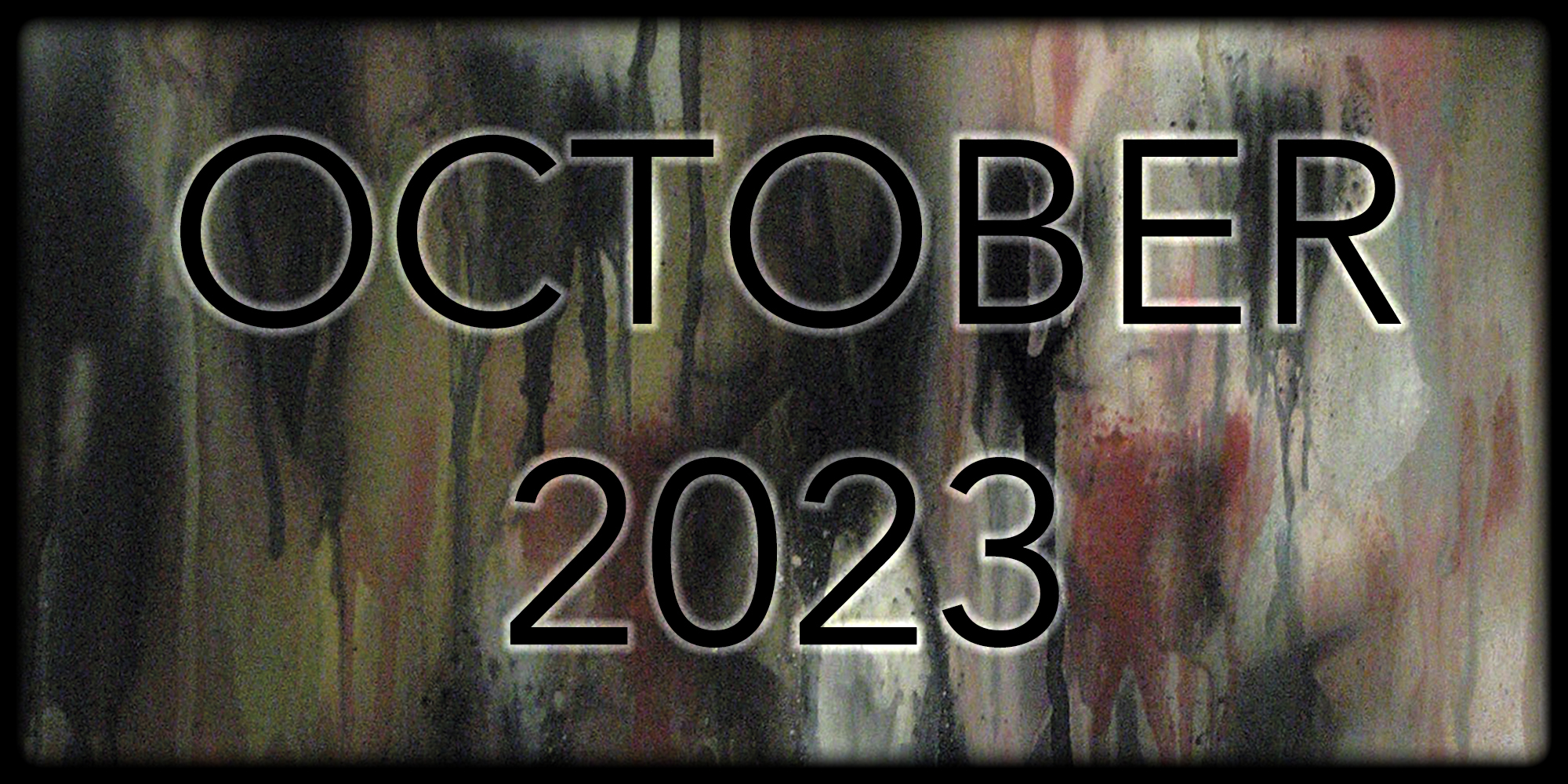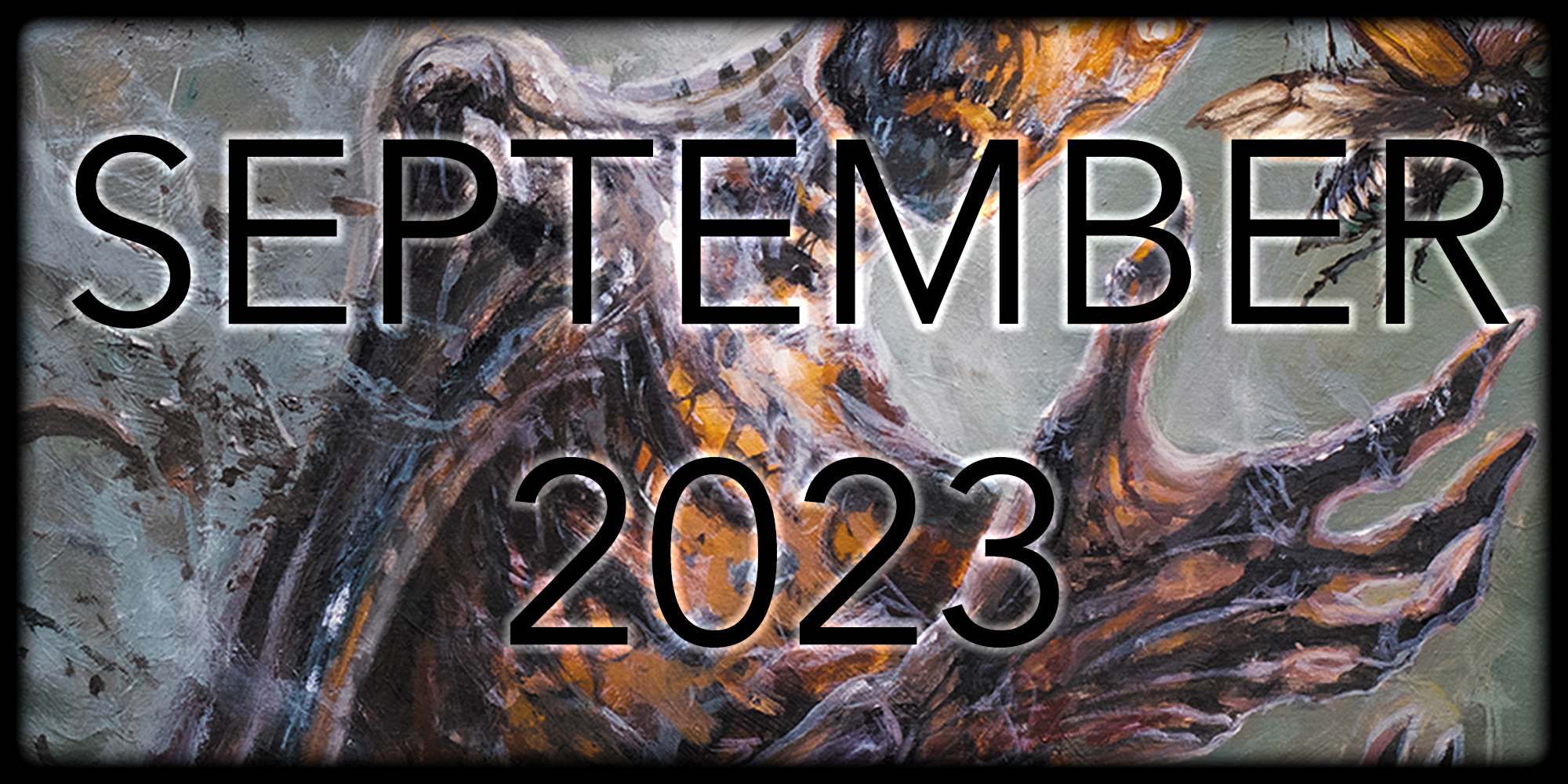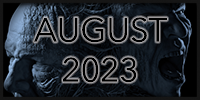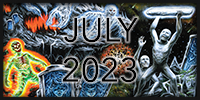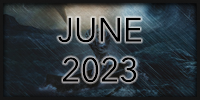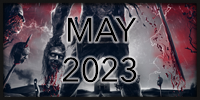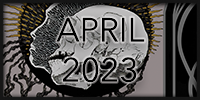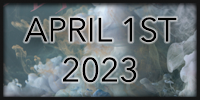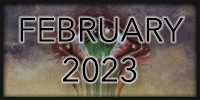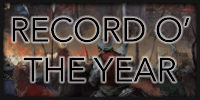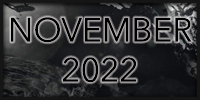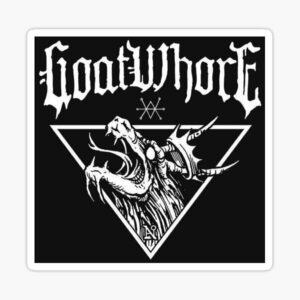
Goatwhore declared war on heaven in the year 2000, and the fight rages onward. Over the past couple decades, the band toured relentlessly and spit out a steady stream of quality releases–and somewhere along the way Goatwhore became an extreme metal institution. Fronted by a charismatic pair of metal lifers in vocalist Ben Falgoust (Soilent Green) and guitarist and occasional singer Sammy Duet (the essential Acid Bath), the New Orleans outfit locked into a feral, frothing hybrid of black metal, death, and thrash on third platter A Haunting Curse. They’ve been roaring along in that vein for five albums now, with eighth record Angels Hung From the Arches of Heaven slated to drop October 7th. Goatwhore’s effortless fusion of genres is more original than it gets credit for being, and the band has yet to put out a bad album.
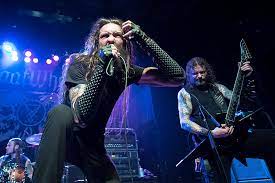 The elements of the Goatwhore Cinematic Universe remain constant. A loosely declared war on paradise is afoot, prosecuted by means of foul rites and rampaging demons. It all sounds (and can be!) a bit silly, but Goatwhore’s brand of Satanism has a “fuck you, I do what I want” energy that has as much in common with Judas Priest as it does Watain. You could substitute “Boss-Man” for “God” in lots of their demented biker hymns without changing the spirit much. Goatwhore is reliably extreme, but they’re also big fun. Carving Out the Eyes of God’s monster opener “Apocalyptic Havoc” ushered in the era of the “Goatwhore hit”; every platter since features at least one downright catchy anthem. This new pursuit has taken the band to some amazing places (“When Steel and Bone Meet,” “Baring Teeth for Revolt”) and some borderline goofy ones (“Fbs,” short for “Fucked by Satan”). The albums themselves remain vital, and the outfit’s live show is as good as ever. Goatwhore doesn’t look to be slowing down any time soon–but if they retired tomorrow, the band would leave behind a consistent, entertaining, and ever-so-slightly underrated legacy of raising a collective middle finger to everything a reasonable person might hold sacred.
The elements of the Goatwhore Cinematic Universe remain constant. A loosely declared war on paradise is afoot, prosecuted by means of foul rites and rampaging demons. It all sounds (and can be!) a bit silly, but Goatwhore’s brand of Satanism has a “fuck you, I do what I want” energy that has as much in common with Judas Priest as it does Watain. You could substitute “Boss-Man” for “God” in lots of their demented biker hymns without changing the spirit much. Goatwhore is reliably extreme, but they’re also big fun. Carving Out the Eyes of God’s monster opener “Apocalyptic Havoc” ushered in the era of the “Goatwhore hit”; every platter since features at least one downright catchy anthem. This new pursuit has taken the band to some amazing places (“When Steel and Bone Meet,” “Baring Teeth for Revolt”) and some borderline goofy ones (“Fbs,” short for “Fucked by Satan”). The albums themselves remain vital, and the outfit’s live show is as good as ever. Goatwhore doesn’t look to be slowing down any time soon–but if they retired tomorrow, the band would leave behind a consistent, entertaining, and ever-so-slightly underrated legacy of raising a collective middle finger to everything a reasonable person might hold sacred.
– Ferox
Ferox
I discovered Goatwhore at a museum, of all places. The rooftop of the Petersen Automotive Museum in Los Angeles had been repurposed to host a grappling event, and Shayna Baszler (then a fighter with the UFC, now a performer with WWE) was there in a Goatwhore t-shirt. Ferox was just getting back into metal at the time, dicking around with gateway drugs like Mastodon, and Baszler’s shirt led me to Carving Out the Eyes of God. Goatwhore’s rollicking, ranting take on black thrash was my reintroduction to the hard stuff, and since then they’ve been a constant companion to my metal fandom. The combo of Ben Falgoust’s vocals and Sammy Duet’s razor-wire riffs takes me to my happy place. To put it in the parlance of the times: I stan Goatwhore, simping for the outfit so hard that I once used the platform of my day job to shove them in the face of a wider audience.1 So consider that Ferox is as much fan as he is critic when it comes to these guys, and look elsewhere for your measured analysis of their place in the metal-verse. I’m just here to rank some motherfukkin’ Goatwhore.
The Ranking:
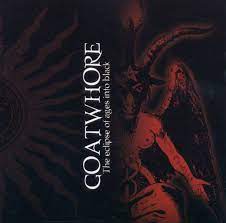 #7.: The Eclipse of Ages into Black (2000). Goatwhore’s debut is straight black metal, a muffled ode to Beelzebub that sounds unlike anything else in their catalog. Falgoust and Duet seem to split the vocals here, with Ben’s black rasps sharing space with eerie moans and spoken word sections. There are signs of the fun and the fury to come (“Graveyards and Dead Angels,” “Invert the Virgin”), and it remains a quality example of the form all these years later–but if you’re just getting acquainted with the band, save this one for later.
#7.: The Eclipse of Ages into Black (2000). Goatwhore’s debut is straight black metal, a muffled ode to Beelzebub that sounds unlike anything else in their catalog. Falgoust and Duet seem to split the vocals here, with Ben’s black rasps sharing space with eerie moans and spoken word sections. There are signs of the fun and the fury to come (“Graveyards and Dead Angels,” “Invert the Virgin”), and it remains a quality example of the form all these years later–but if you’re just getting acquainted with the band, save this one for later.
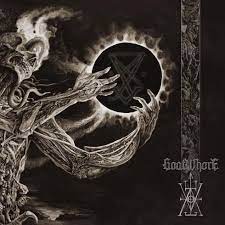 #6: Vengeful Ascension (2017). The band’s most recent album finds them looking to Paradise Lost for inspiration, filtering Milton’s vision of Satan’s rebellion through a well-honed bag of tricks that is starting to feel like a formula. It remains a fucking ripper; from album six through album two, there is not all that much distance between Goatwhore’s output. But the high points are a little less high and the lows a tad lower–and so Vengeful Ascension sinks toward the bottom of a consistent library. Still and all: the trio of “Under the Flesh, Into the Soul,” “Vengeful Ascension,” and “Chaos Arcane” rivals anything they’ve done.
#6: Vengeful Ascension (2017). The band’s most recent album finds them looking to Paradise Lost for inspiration, filtering Milton’s vision of Satan’s rebellion through a well-honed bag of tricks that is starting to feel like a formula. It remains a fucking ripper; from album six through album two, there is not all that much distance between Goatwhore’s output. But the high points are a little less high and the lows a tad lower–and so Vengeful Ascension sinks toward the bottom of a consistent library. Still and all: the trio of “Under the Flesh, Into the Soul,” “Vengeful Ascension,” and “Chaos Arcane” rivals anything they’ve done.
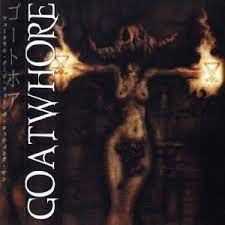 #5: Funeral Dirge for the Rotting Sun (2003). Goatwhore’s second release is poised between the black metal of their debut and the hybrid sound destined to cover the band in glory. The unsettling clean vocals and spoken word sections remain a prominent feature, although Duet has begun to cede the vocal spotlight to Falgoust. The roots of Goatwhore’s “exstream” aesthetic–an ability to season the unquestionably extreme with appealing mainstream flourishes–are apparent on “Sky Inferno,” “As the Sun Turns to Ash,” and “Baptized in a Storm of Swords.” This nasty beast has a special place in my heart, although duty prevents me from placing it higher.
#5: Funeral Dirge for the Rotting Sun (2003). Goatwhore’s second release is poised between the black metal of their debut and the hybrid sound destined to cover the band in glory. The unsettling clean vocals and spoken word sections remain a prominent feature, although Duet has begun to cede the vocal spotlight to Falgoust. The roots of Goatwhore’s “exstream” aesthetic–an ability to season the unquestionably extreme with appealing mainstream flourishes–are apparent on “Sky Inferno,” “As the Sun Turns to Ash,” and “Baptized in a Storm of Swords.” This nasty beast has a special place in my heart, although duty prevents me from placing it higher.
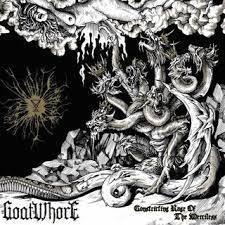 #4: Constricting Rage of the Merciless (2014). The group’s first album with longtime touring soundman Jarrett Pritchard at the controls lands a hair shy of their Erik Rutan-produced peak. I underrated it when it first came out, but Constricting Rage of the Merciless still earns steady spins when I check in with Goatwhore The platter showcases effective flashes of variety in “Cold Earth Consumed in Dying Flesh” and “Schaudenfreude,” and Goatwhore’s singles game has never been more on point. “Baring Teeth for Revolt” and “Fbs” are both live staples–and while it’s true “Fbs” veers into pandering territory, it’s still a blast to raise a fist and scream “Fucked! By! Satan!” alongside a roomful of fellow fans.
#4: Constricting Rage of the Merciless (2014). The group’s first album with longtime touring soundman Jarrett Pritchard at the controls lands a hair shy of their Erik Rutan-produced peak. I underrated it when it first came out, but Constricting Rage of the Merciless still earns steady spins when I check in with Goatwhore The platter showcases effective flashes of variety in “Cold Earth Consumed in Dying Flesh” and “Schaudenfreude,” and Goatwhore’s singles game has never been more on point. “Baring Teeth for Revolt” and “Fbs” are both live staples–and while it’s true “Fbs” veers into pandering territory, it’s still a blast to raise a fist and scream “Fucked! By! Satan!” alongside a roomful of fellow fans.
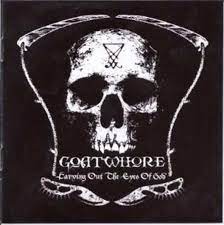 #3: Carving Out the Eyes of God (2009). It’s straight classics from here on out. Everything was in place for Goatwhore to make a big statement with their fourth album. They did just that, roaring out of the gate with the iconic “Apocalyptic Havoc” and its cry of “WHO NEEDS A GOD WHEN YOU’VE GOT SATAN?” Confident in the sludge-infused hurricane of sound they unleashed on third outing A Haunting Curse, Goatwhore tinkered in the margins on Carving Out the Eyes of God. The set is a showcase for the perennially underrated guitar heroics of Sammy Duet and Zack Simmons’s powerful drumming, with highlights that include “In Legions, I Am Wars of Wrath” and “Reckoning of the Soul Made Godless.” Carving Out the Eyes of God is the work of a band at the top of their game, a chesty swagger through ten killer tunes.
#3: Carving Out the Eyes of God (2009). It’s straight classics from here on out. Everything was in place for Goatwhore to make a big statement with their fourth album. They did just that, roaring out of the gate with the iconic “Apocalyptic Havoc” and its cry of “WHO NEEDS A GOD WHEN YOU’VE GOT SATAN?” Confident in the sludge-infused hurricane of sound they unleashed on third outing A Haunting Curse, Goatwhore tinkered in the margins on Carving Out the Eyes of God. The set is a showcase for the perennially underrated guitar heroics of Sammy Duet and Zack Simmons’s powerful drumming, with highlights that include “In Legions, I Am Wars of Wrath” and “Reckoning of the Soul Made Godless.” Carving Out the Eyes of God is the work of a band at the top of their game, a chesty swagger through ten killer tunes.
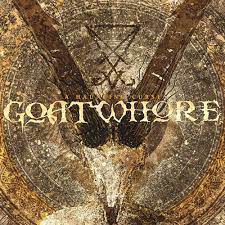 #2: A Haunting Curse (2006). Goatwhore touched the monolith somewhere during the making of A Haunting Curse, taking an evolutionary leap forward from Funeral Dirge for the Rotting Sun. The first of a stellar three-album run produced by Erik Rutan, A Haunting Curse has aged remarkably well. “Alchemy of the Black Sun Cult” and “Forever Consumed Oblivion” are the standouts, but the whole platter flows together seamlessly. There are no changes of pace here, no pauses to catch your breath. A Haunting Curse buries the needle in the red with the screams that open “Wear These Scars of Testimony” and keeps it there for the next forty minutes. It’s a relentless, savage ride that remains well worth taking sixteen years later.
#2: A Haunting Curse (2006). Goatwhore touched the monolith somewhere during the making of A Haunting Curse, taking an evolutionary leap forward from Funeral Dirge for the Rotting Sun. The first of a stellar three-album run produced by Erik Rutan, A Haunting Curse has aged remarkably well. “Alchemy of the Black Sun Cult” and “Forever Consumed Oblivion” are the standouts, but the whole platter flows together seamlessly. There are no changes of pace here, no pauses to catch your breath. A Haunting Curse buries the needle in the red with the screams that open “Wear These Scars of Testimony” and keeps it there for the next forty minutes. It’s a relentless, savage ride that remains well worth taking sixteen years later.
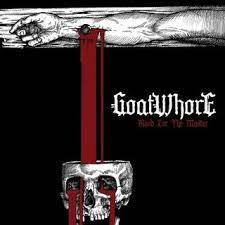 #1: Blood for the Master (2012). This one should be locked in a padded cell for its own safety, and for the safety of the public. There’s no new collaborator nudging the band to greater heights on B4tM, no new wrinkle in the band’s sound. Why, then, does it sit so decisively atop Goatwhore’s catalog? It’s just a little meaner, a little more unhinged, and a little scarier than everything else. The album blitzkriegs down atop the listener with the frenzied opening of “Collapse in Eternal Worth,” and the whole thing blasts past so quickly that you almost don’t notice how good the songs are. The thing is: they’re great. “When Steel and Bone Meet” is the band’s best “hit,” “My Name is Frightful Among the Believers” is their best album closer, and the aforementioned “Collapse in Eternal Worth” is their best mad-dog assault. Goatwhore may have touched the monolith while making A Haunted Curse, but they were touched by a deity of their choosing2 during B4tM. I make my living as a writer, and I am constantly pursuing those moments of strange alchemy when the same creative process I’ve pursued hundreds of times somehow yields magical results. Blood for the Master is the sound of that happening for the die-hards in Goatwhore.
#1: Blood for the Master (2012). This one should be locked in a padded cell for its own safety, and for the safety of the public. There’s no new collaborator nudging the band to greater heights on B4tM, no new wrinkle in the band’s sound. Why, then, does it sit so decisively atop Goatwhore’s catalog? It’s just a little meaner, a little more unhinged, and a little scarier than everything else. The album blitzkriegs down atop the listener with the frenzied opening of “Collapse in Eternal Worth,” and the whole thing blasts past so quickly that you almost don’t notice how good the songs are. The thing is: they’re great. “When Steel and Bone Meet” is the band’s best “hit,” “My Name is Frightful Among the Believers” is their best album closer, and the aforementioned “Collapse in Eternal Worth” is their best mad-dog assault. Goatwhore may have touched the monolith while making A Haunted Curse, but they were touched by a deity of their choosing2 during B4tM. I make my living as a writer, and I am constantly pursuing those moments of strange alchemy when the same creative process I’ve pursued hundreds of times somehow yields magical results. Blood for the Master is the sound of that happening for the die-hards in Goatwhore.
Saunders
I came to Goatwhore through my love of legendary NOLA bands Acid Bath and Soilent Green. Sharing members with both bands, it was a logical progression into Goatwhore’s 2000 debut album, The Eclipse of Ages into Black. However, perhaps it was my mindset of the period, but I was initially underwhelmed back in the day; the rawer, more traditional black metal approach fell flat. Before long Goatwhore truly began to develop a more distinctive, powerful sound, expertly mixing burly black metal with elements of death, thrash and the rich bloodlines of NOLA sludge. The debut eventually clicked, but it was the subsequent, early to mid-career highlights that cemented Goatwhore as modern-day metal legends. Ben Falgoust (Soilent Green) remains one of my favorite extreme metal vocalists, while Sammy Duet’s underrated axework, dedication to the blackened craft, and potent backing vocals (who could forget his understated but key vocal role in Acid Bath?) drive a tight unit. Ranking the band’s extensive discography is no easy feat, nor should it be, as this is what AMG Goes Ranking is all about: fierce debate between writers and readers alike. Goatwhore is a tried-and-true institution of dependable quality, so even lesser platters are worthy of attention. Hail Satan!!!
The Ranking:
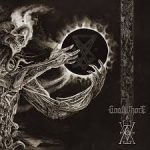 #7: Vengeful Ascension (2017). I was too generous with my assessment of Goatwhore’s 2017 opus, and hasty in my comment that it sat in the middle to upper tier of the band’s catalog. While by no means a bad album, with the benefit of hindsight, it smacked of a band in an all too familiar comfort zone and has not inspired regular revisits in the intervening five years when I’ve sought out my Goatwhore fix. I can never accuse Goatwhore of phoning it in or sounding anything less than committed to their craft. However, the need to freshen up and take some creative risks began to show. It remains a solid album–Goatwhore are incapable of releasing duds, and it’s enlivened by monstrous Goatwhore specials, such as “Decayed Omen Reborn” and “Mankind Will Have No Mercy.”
#7: Vengeful Ascension (2017). I was too generous with my assessment of Goatwhore’s 2017 opus, and hasty in my comment that it sat in the middle to upper tier of the band’s catalog. While by no means a bad album, with the benefit of hindsight, it smacked of a band in an all too familiar comfort zone and has not inspired regular revisits in the intervening five years when I’ve sought out my Goatwhore fix. I can never accuse Goatwhore of phoning it in or sounding anything less than committed to their craft. However, the need to freshen up and take some creative risks began to show. It remains a solid album–Goatwhore are incapable of releasing duds, and it’s enlivened by monstrous Goatwhore specials, such as “Decayed Omen Reborn” and “Mankind Will Have No Mercy.”
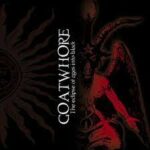
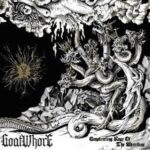 #5: Constricting Rage of the Merciless (2014). I admit to skimming over this album initially, as it seemed an underwhelming follow-up to Blood for the Master. However, upon revisiting and giving it the attention and time it deserves, I’ve begun to appreciate the album’s strengths and diversity. Consistency may not be its greatest strength–however, there are lots of fun and inspired moments, such as the infectious, punk-charged riffage of “Baring Teeth for Revolt,” brutal blackened death-doom crush of “Cold Earth Consumed in Dying Flesh” and old school thrash assault of “Fbs.” Overall, a solid, underrated album with a catchy, upbeat vibe. Perhaps slightly less consistent, however, an overall more exciting, adventurous offering than Vengeful Ascension.
#5: Constricting Rage of the Merciless (2014). I admit to skimming over this album initially, as it seemed an underwhelming follow-up to Blood for the Master. However, upon revisiting and giving it the attention and time it deserves, I’ve begun to appreciate the album’s strengths and diversity. Consistency may not be its greatest strength–however, there are lots of fun and inspired moments, such as the infectious, punk-charged riffage of “Baring Teeth for Revolt,” brutal blackened death-doom crush of “Cold Earth Consumed in Dying Flesh” and old school thrash assault of “Fbs.” Overall, a solid, underrated album with a catchy, upbeat vibe. Perhaps slightly less consistent, however, an overall more exciting, adventurous offering than Vengeful Ascension.
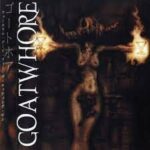 #4: Funeral Dirge for the Rotting Sun (2003). Goatwhore’s sophomore album marked a sizable leap forward from the debut and remains a hard-hitting early career highlight. I have fond memories of jamming the awesomely titled Funeral Dirge for the Rotting Sun on a regular basis on release, and despite its flaws, it remains a nostalgic and sentimental highlight in the band’s canon. This is where Goatwhore truly emerged as a fully-fledged entity, rather than sludgy black metal side project. Cleaner production and an especially potent vocal attack highlighted an album that expanded significantly from their early incarnation, creating a distinctive sound, incorporating elements of death, sludge, thrash and gothy undertones to complement their rotten black metal core. The more prominent strange, mopey cleans oddly work, though likely divide opinions. Songs like “Blood Guilt Eucharist,” “Sky Inferno” and “Baptized in a Storm of Swords” are not to be fucked with, yet across the board it’s a consistently gripping and dynamic ride.
#4: Funeral Dirge for the Rotting Sun (2003). Goatwhore’s sophomore album marked a sizable leap forward from the debut and remains a hard-hitting early career highlight. I have fond memories of jamming the awesomely titled Funeral Dirge for the Rotting Sun on a regular basis on release, and despite its flaws, it remains a nostalgic and sentimental highlight in the band’s canon. This is where Goatwhore truly emerged as a fully-fledged entity, rather than sludgy black metal side project. Cleaner production and an especially potent vocal attack highlighted an album that expanded significantly from their early incarnation, creating a distinctive sound, incorporating elements of death, sludge, thrash and gothy undertones to complement their rotten black metal core. The more prominent strange, mopey cleans oddly work, though likely divide opinions. Songs like “Blood Guilt Eucharist,” “Sky Inferno” and “Baptized in a Storm of Swords” are not to be fucked with, yet across the board it’s a consistently gripping and dynamic ride.
 #3: A Haunting Curse (2006). Over the years Goatwhore’s pivotal third album A Haunting Curse has sat amongst my personal favorite albums from the band. It garnered ample airplay on release and continues to inspire solid rotation when my Goatwhore cravings emerge. Significantly, A Haunting Curse also kicked off a fruitful collaboration with metal legend and producer Erik Rutan. It remains perhaps Goatwhore’s most single-mindedly focused and bludgeoning release, an unrelenting, burly powerhouse of black/death/thrash mayhem, forging the tighter, more cohesive sound that would become their signature. Tautly whipping southern sludge with grim, thrashy blackened death, the album rarely lets up. A Haunting Curse has great atmosphere and the subtle rhythmic shifts, infectious, genre-blending riffcraft, and pure, uncompromising aggression form a gripping assault on the senses, only marred by its stoutly effective yet fatiguing production and one-note approach.
#3: A Haunting Curse (2006). Over the years Goatwhore’s pivotal third album A Haunting Curse has sat amongst my personal favorite albums from the band. It garnered ample airplay on release and continues to inspire solid rotation when my Goatwhore cravings emerge. Significantly, A Haunting Curse also kicked off a fruitful collaboration with metal legend and producer Erik Rutan. It remains perhaps Goatwhore’s most single-mindedly focused and bludgeoning release, an unrelenting, burly powerhouse of black/death/thrash mayhem, forging the tighter, more cohesive sound that would become their signature. Tautly whipping southern sludge with grim, thrashy blackened death, the album rarely lets up. A Haunting Curse has great atmosphere and the subtle rhythmic shifts, infectious, genre-blending riffcraft, and pure, uncompromising aggression form a gripping assault on the senses, only marred by its stoutly effective yet fatiguing production and one-note approach.
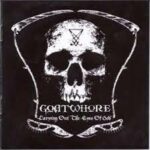 #2: Carving Out the Eyes of God (2009). If A Haunting Curse could be accused of being a tad one-dimensional, follow-up Carving out the Eyes of God added a touch more nuance, melody and songwriting variety into the mix. All the while Goatwhore maintained the tighter musical chops, explosive aggression and blasting intensity pivotal to their no-holds-barred approach. Goatwhore had never sounded as inspired and comfortable in their own skin. Sammy Duet’s guitar work explored more melodic terrain, peppering the album’s rugged base with schmick solos, such as the wicked shreddage carving through rugged brawler, “Shadow of a Rising Knife.” Falgoust’s excellent, tone-shifting growls are particularly potent, boosted by the evil sounding vox from Duet (check their stellar dual work on “Reckoning of the Soul Made Godless”).
#2: Carving Out the Eyes of God (2009). If A Haunting Curse could be accused of being a tad one-dimensional, follow-up Carving out the Eyes of God added a touch more nuance, melody and songwriting variety into the mix. All the while Goatwhore maintained the tighter musical chops, explosive aggression and blasting intensity pivotal to their no-holds-barred approach. Goatwhore had never sounded as inspired and comfortable in their own skin. Sammy Duet’s guitar work explored more melodic terrain, peppering the album’s rugged base with schmick solos, such as the wicked shreddage carving through rugged brawler, “Shadow of a Rising Knife.” Falgoust’s excellent, tone-shifting growls are particularly potent, boosted by the evil sounding vox from Duet (check their stellar dual work on “Reckoning of the Soul Made Godless”).
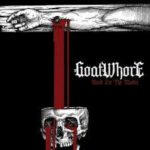
Felagund
Some metal bands opt for subtlety and nuance, focusing each composition on a gradual, extended build toward a cathartic musical climax, as lush and profound as it is beautiful and entrancing. Goatwhore, as their name implies, is not one of those bands, and I love ’em for it. Over the course of twenty-two years and seven releases, Goatwhore’s musical growth is oddly inspiring, especially for a genre whose stalwarts can sometimes celebrate stagnation. Beginning as a Frankensteined second-wave black metal project, these Big Easy blasphemers have evolved over time into a genre-hopping blackened thrash outfit, perfectly comfortable dishing out both deathened crunch and sludgy chugs in succinctly sacrilegious doses; doses I’ve been all too happy to slurp down like that one kid who likes the orange Triaminic a little too much. And while not every resulting record has been a winner (as these rankings no doubt imply) there have been enough successes to hypothesize that their most recent output, mighty yet flawed though it is, represents just another stepping stone to greatness. But before we pass judgement on their upcoming eighth album Angels Hung From the Arches of Heaven, let’s see how these gauntlet-wearing ghouls measure up…against themselves.
The Ranking:
 #7. The Eclipse of Ages into Black (2000). It’s hard to rank this album because it doesn’t sound at all like the Goatwhore we’ve come to know and love. But rank we must. Their first release is also their weakest, delivering straightforward second wave black metal worship, complete with a twangy, hollow snare. It’s clear Goatwhore were still trying to find their way on their debut, and while tracks like “Upon This Deathbed of Cold Fire,” “Gravedom” and “Invert the Virgin” are promising cuts and maintain a certain rugged charm, there’s far too much repetition over a too-long runtime to place it any higher than dead last.
#7. The Eclipse of Ages into Black (2000). It’s hard to rank this album because it doesn’t sound at all like the Goatwhore we’ve come to know and love. But rank we must. Their first release is also their weakest, delivering straightforward second wave black metal worship, complete with a twangy, hollow snare. It’s clear Goatwhore were still trying to find their way on their debut, and while tracks like “Upon This Deathbed of Cold Fire,” “Gravedom” and “Invert the Virgin” are promising cuts and maintain a certain rugged charm, there’s far too much repetition over a too-long runtime to place it any higher than dead last.
 #6. Funeral Dirge for the Rotting Sun (2003). Goatwhore’s second release showed much-needed growth as well as the beginnings of the more varied compositions that would soon become a trademark. Funeral Dirge for the Rotting Sun builds upon the first album’s blackened foundation, introducing elements of death metal, trad and thrash. “Baptized in a Storm of Swords” is probably the strongest cut, followed by “Sky Inferno,” both of which lay gnarly breadcrumbs for the far better albums to follow. While Funeral Dirge marks an improvement, it isn’t much of one, and just barely beats out the debut on this list. This album is a stepping stone, and it shows.
#6. Funeral Dirge for the Rotting Sun (2003). Goatwhore’s second release showed much-needed growth as well as the beginnings of the more varied compositions that would soon become a trademark. Funeral Dirge for the Rotting Sun builds upon the first album’s blackened foundation, introducing elements of death metal, trad and thrash. “Baptized in a Storm of Swords” is probably the strongest cut, followed by “Sky Inferno,” both of which lay gnarly breadcrumbs for the far better albums to follow. While Funeral Dirge marks an improvement, it isn’t much of one, and just barely beats out the debut on this list. This album is a stepping stone, and it shows.
 #5. Constricting Rage of the Merciless (2014). After a string of strong, raging releases, 2014s Constricting Rage of the Merciless is something of a disappointment; it lacks both the inventiveness and immediacy of their three previous albums, as if Goatwhore just weren’t sure where to go after the highest of highs reached by 2012’s Blood for the Master. “Baring Teeth for Revolt” continues their dalliances with Mötorhead-inspired speed, and “Fbs” contains all the energy and vitality that much of the rest of the album lacks. That being said, the album’s second-half is much stronger than the first and the band’s thrashy, blackened death through-line, while damaged, remains intact.
#5. Constricting Rage of the Merciless (2014). After a string of strong, raging releases, 2014s Constricting Rage of the Merciless is something of a disappointment; it lacks both the inventiveness and immediacy of their three previous albums, as if Goatwhore just weren’t sure where to go after the highest of highs reached by 2012’s Blood for the Master. “Baring Teeth for Revolt” continues their dalliances with Mötorhead-inspired speed, and “Fbs” contains all the energy and vitality that much of the rest of the album lacks. That being said, the album’s second-half is much stronger than the first and the band’s thrashy, blackened death through-line, while damaged, remains intact.
 #4. Vengeful Ascension (2017). The follow up to Constricting Rage of the Merciless was a definite improvement, finding Goatwhore opting for a warmer, fuzzier sound, pushing the vox further back in the mix and trading their blackened edge for a deathened one. It also reintroduces some of the immediacy missing from Constricting, perhaps most notably on “Under the Flesh, Into the Soul” and “Chaos Arcane.” Vengeful Ascension is a solid, middling release. If my top three on this list are keen-edged scythes, this album is a rusty, bloody hammer. Both are deadly, but only one is my preferred delivery method for Goatwhore’s brand of blasphemy.
#4. Vengeful Ascension (2017). The follow up to Constricting Rage of the Merciless was a definite improvement, finding Goatwhore opting for a warmer, fuzzier sound, pushing the vox further back in the mix and trading their blackened edge for a deathened one. It also reintroduces some of the immediacy missing from Constricting, perhaps most notably on “Under the Flesh, Into the Soul” and “Chaos Arcane.” Vengeful Ascension is a solid, middling release. If my top three on this list are keen-edged scythes, this album is a rusty, bloody hammer. Both are deadly, but only one is my preferred delivery method for Goatwhore’s brand of blasphemy.
 #3. Carving Out the Eyes of God (2009). This might be the first controversial placement on my list, and I agonized over this one. You just can’t go wrong with album opener “Apocalyptic Havoc” and both the titular “Carving Out the Eyes of God” and “Shadow of a Rising Knife” are thrashy, violent good times. This album is a solid continuation of its predecessor without improving upon it, hence the still-respectable third place finish. Carving features so much of what I associate with Goatwhore, from the varied vocal performances to the frenetic genre-hopping and unrelenting, sneering energy. This album solidified the mold, but another actually set it.
#3. Carving Out the Eyes of God (2009). This might be the first controversial placement on my list, and I agonized over this one. You just can’t go wrong with album opener “Apocalyptic Havoc” and both the titular “Carving Out the Eyes of God” and “Shadow of a Rising Knife” are thrashy, violent good times. This album is a solid continuation of its predecessor without improving upon it, hence the still-respectable third place finish. Carving features so much of what I associate with Goatwhore, from the varied vocal performances to the frenetic genre-hopping and unrelenting, sneering energy. This album solidified the mold, but another actually set it.
 #2. A Haunting Curse (2006). A Haunting Curse, the band’s third release, is where Goatwhore became Goatwhore. It’s a crisp, thrash-infused, blackened-sludge riff fest, featuring a powerful dynamism that successfully carried these New Orleanians through three solid back-to-back releases. While the opening two tracks tell you everything you need to know, “My Eyes Are the Spears of Chaos” reveals a band truly coming into their own and “Silence Marked by the Breaking of Bone” introduces a crushing heaviness that would become a welcome trademark. Thrash, death, black and trad metal converge and intertwine to make for one of the strongest, fiercest albums in their catalogue.
#2. A Haunting Curse (2006). A Haunting Curse, the band’s third release, is where Goatwhore became Goatwhore. It’s a crisp, thrash-infused, blackened-sludge riff fest, featuring a powerful dynamism that successfully carried these New Orleanians through three solid back-to-back releases. While the opening two tracks tell you everything you need to know, “My Eyes Are the Spears of Chaos” reveals a band truly coming into their own and “Silence Marked by the Breaking of Bone” introduces a crushing heaviness that would become a welcome trademark. Thrash, death, black and trad metal converge and intertwine to make for one of the strongest, fiercest albums in their catalogue.
 #1. Blood for the Master (2012). 2012’s Blood for the Master finds our heroes at the height of their powers, delivering a hefty dose of their signature blackened thrash sound, with dashes of speed and southern-inspired sludge for good measure, all perfected and honed to a deadly edge on the bloody whetstones of both Haunting and Carving. From start to finish, B4tM is an unrelenting beast, jumping seamlessly between genres, tones and atmospheres. Want a flat-out banger? You’re looking for opener “Collapse in Eternal Worth.” Eager for a speed-inspired chug fest? Go for “When Steel and Bone Meet.” How about melodic black metal with emotive tremolos? Spin “Beyond the Spell of Discontent.” This ripper of an album has something for everyone, and is capped by some of the best vocal work of Ben Falgoust’s career. When I think of an album that embodies the carnal core of Goatwhore’s sound in all its sinful glory, it’s Blood for the Master.
#1. Blood for the Master (2012). 2012’s Blood for the Master finds our heroes at the height of their powers, delivering a hefty dose of their signature blackened thrash sound, with dashes of speed and southern-inspired sludge for good measure, all perfected and honed to a deadly edge on the bloody whetstones of both Haunting and Carving. From start to finish, B4tM is an unrelenting beast, jumping seamlessly between genres, tones and atmospheres. Want a flat-out banger? You’re looking for opener “Collapse in Eternal Worth.” Eager for a speed-inspired chug fest? Go for “When Steel and Bone Meet.” How about melodic black metal with emotive tremolos? Spin “Beyond the Spell of Discontent.” This ripper of an album has something for everyone, and is capped by some of the best vocal work of Ben Falgoust’s career. When I think of an album that embodies the carnal core of Goatwhore’s sound in all its sinful glory, it’s Blood for the Master.
Official AMG Ranking
The writers’ votes have been cast and counted, although frankly staff turnout to this free and fair election was dismaying. Democracy dies In indifference to Ranking Goatwhore. Here, suitable for carving onto stone tablets, is the Official AMG Ranking for Goatwhore:
#7: The Eclipse of Ages into Black (2000), with 4 points out of a possible 213
#6: Vengeful Ascension (2017), with 7 points out of a possible 21
#5: Funeral Dirge for the Rotting Sun (2003), with 9 points out of a possible 21
#4: Constricting Rage of the Merciless (2014), with 10 points out of a possible 21
#3: Carving Out the Eyes of God (2009), with 16 points out of a possible 21
#2: A Haunting Curse (2006), with 17 points out of a possible 21
#1: Blood for the Master (2012), with 21 points out of a possible 21
If you don’t know Goatwhore, ask yourself some probing questions. After you do that, check out this primer assembled by Felagund, Saunders, and Ferox:
